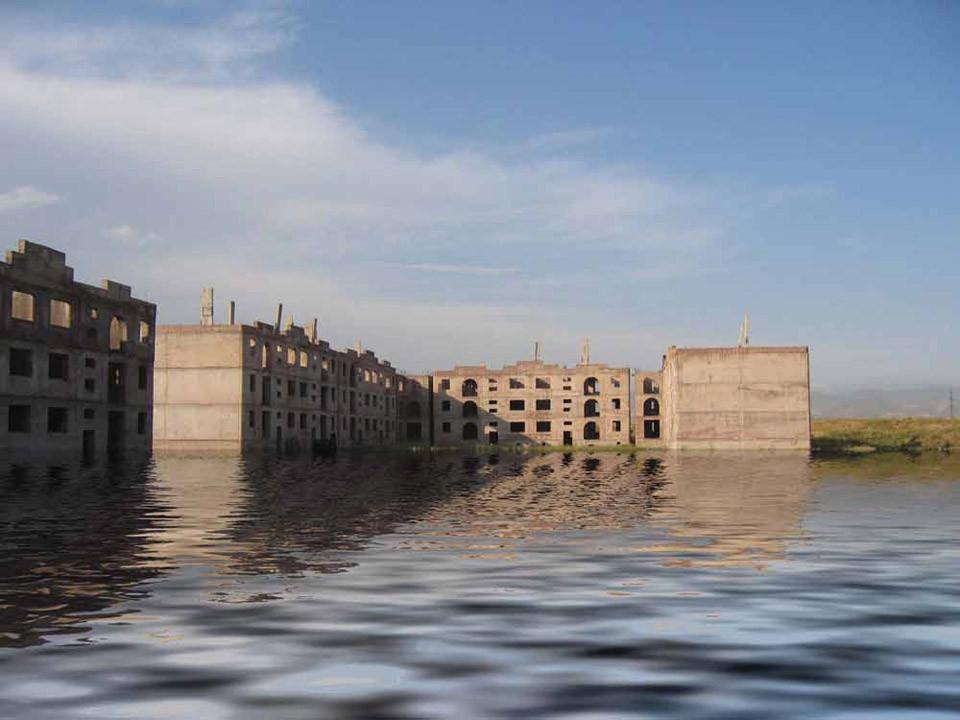Vahram Aghasyan
Ghost City
Vahram Aghasyan
Ghost City, 2007, 3 photographs, colour print on PVC, 100 × 133 cm
Collection II of the Arsenal Gallery in Białystok. Work purchased by the Podlaskie Association for the Promotion of Fine Arts

Vahram Aghasyan’s photographs are digitally altered images of the skeleton-like apartment blocks in the Mush district of the city of Gyumri. The plan to construct an entirely new residential estate, located close to the city centre, was the answer of the Soviet authorities to the terrible destruction incurred by Armenia – then one of the Soviet republics – during an earthquake in 1988. Gyumri, located in the north-east of the country, was one of the worst damaged cities. Construction works began as early as in 1989, but they were interrupted by the fall of the Soviet Union and never resumed.
Photographs of the grey concrete façades marked with blind window openings and fragments of walls bristling with iron rods can be located within the repertoire of dystopian images showing a post-apocalyptic world. The large town of ghostly blocks seems to be a no-man’s land, an abandoned and vacant space. Yet the Mush district is not a land that had been ruined or devastated by some cataclysm. Its status is even more complex: it is a part of a city that has never been built – dozens of buildings in which no soul has ever lived. Political and economic considerations sentenced the district to destruction before it had even been finished.
Aghasyan’s Ghost City is a cycle of images that report the failure of a utopia. The theme of an idealistic vision which was not fulfilled or was carried out in a contrary way is present in these photographs on more than one level. On the one hand it is the district itself, which was initially planned as a high-end one and had enormous sums of money invested into its construction. Its location near the city centre, not in the suburbs, was unusual; the context of the post-earthquake Armenia imbued it with a propagandistic message and made it a consolation project. Also its architecture, which was in the spirit of Modernism, was utopian in its character. Many residential estates constructed in the period between the 1960s and the 1980s in the countries of the Soviet bloc perfectly illustrate the failure of the Modernist conception of residential architecture. These areas are unified, so to speak, by an overriding political utopia, which in the course of decades had revealed its dystopian nature. Aghasyan performs a virtual act of destruction – another one, or perhaps the ultimate one: he immerses the city in water, and it would be difficult not to associate this gesture with the biblical Flood.
Izabela Kopania
translated from Polish by Klaudyna Michałowicz

PLAN YOUR VISIT
Opening times:
Thuesday – Sunday
10:00-18:00
Last admission
to exhibition is at:
17.30